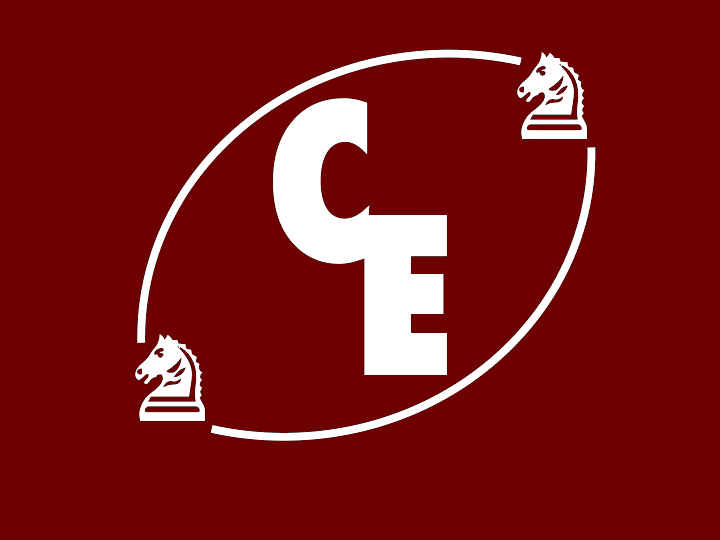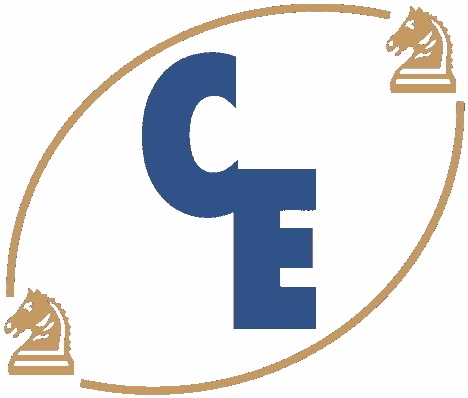It
was in 1992 that, at
the Nurenberger Spielwarremesse in
Germany, the
prototype of the Megathon 2400
was released or more
accurately, was shown
to the World.
A German well known
collector, Karsten Bauermeister,
was assisting at this event and saw the
Megathon 2400.
Jeroen Noomen who was working
for Mephisto (H&G) saw it too.
At this period, Companies of Dedicated Chess
Computers were not doing well.
It was a a fight to survive in a milieu more and
more competitive, more and more difficult...
One company was taking over the other:
Mephisto took
over Fidelity in 1990,
Saitek over Mephisto in 1994...
This situation was adding a lot of confusion in the
production process, but also in the programmer
identification.
Programmers and users became confused about the way
the programs were implemented and who was the author
of the program inside of a computer.
In this line, when Mephisto
took control of Fidelity,
they advertised the Fidelity 2400 Master as a next
released computer. In fact, they never released it.
The same is true about the
Master 2300.
It seems that in the 2 cases a
program by Ed Schroder
was included in the project.
All this confusion in the announcements,
advertisements from different companies could be at
the origin of the decision of
Saitek to do not release the
Megathon 2400.
Originally, the Megathon 2400
was announced as working with
the program of Johan the Koning.
We found trace of that in the 1992 brochure.
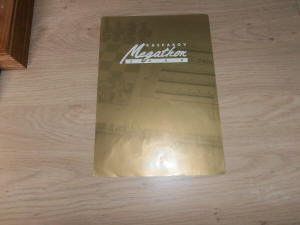 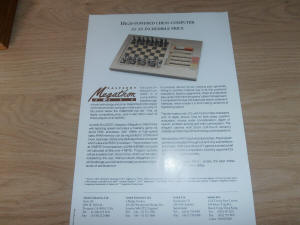 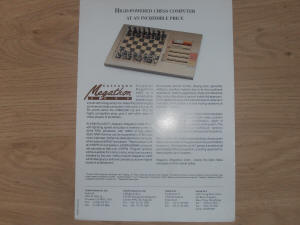
According to Dr. Eric Winkler,
former CEO of Saitek,
when the announcement of the new product was done,
nobody was sure of the name to use:
Megathon 2400 ore Risc 2400....
We must remember that Tasc
B.V. was involved with
Saitek.
Johan the Koning was under contract with TASC
and was supposed to give his program for the new
product.
TASC sold this program to Saitek.
According to Wil Spareboom, the cooperation between
the 2 companies was difficult: Saitek was using low
quality hardware. The performance of the ARM RISC
architecture was not at its best.
Moreover, problems of royalties and payments were
clouding their relationship and put at an end their
collaboration.
At this period, we can see the confusion in the
magazines dedicated to chess computers, like
Computer Chess Report. They mention in
many postings that “the name
of the computer can be
changed “.
The result of all of this investigation could
be summarized as follows:
the Megathon
was
released but under another
name.
It
was the
Saitek Risc 2500:
version 1.02 128 KB, 14MHz,
a little later the version 1.03,
much later version 1.04
256 KB going to a maximum of
2 MB.
The Risc 2500
was playing at
Madrid in 1992.
The computer was only tuned at
29Mhz!
Saitek had another computer in the race
to the Championship title: the SPARC...
The SPARC was running at
50Mhz !
Unfortunately for Saitek, the SPARC in
the last round against the
Chessmachine lost the title...
As a consequence, Saitek was abandoning its
objectives for the computer competition and
disaffected the World Chess Championship.
As a note, at Madrid 1992, the legendary
Spracklens couple was
finishing at the fourth place...
Last try, also for them...
| 01 |
Chessmachine |
NED |
=06 |
+07 |
+10 |
+08 |
+04 |
|
4.5 |
13.50 |
| 02 |
Zugzwang |
GER |
+16 |
+03 |
+14 |
=04 |
=05 |
|
4.0 |
11.50 |
| 03 |
Cumulus 2 |
FRA |
+19 |
-02 |
+15 |
+14 |
+11 |
|
4.0 |
8.00 |
| 04 |
Kasparov Sparc |
USA |
+13 |
+06 |
+09 |
=02 |
-01 |
|
3.5 |
10.50 |
| 05 |
Fritz 2 |
NED/GER |
=11 |
=08 |
+16 |
+09 |
=02 |
|
3.5 |
9.75 |
| 06 |
RISC 2500 |
NED |
=01 |
-04 |
+20 |
+10 |
=07 |
|
3.0 |
7.25 |
| 07 |
Hitech B* |
USA |
=10 |
-01 |
+18 |
+13 |
=06 |
|
3.0 |
6.75 |
| 08 |
Chess Genius |
GBR |
=18 |
=05 |
+21 |
-01 |
+14 |
|
3.0 |
5.50 |
| 09 |
Woodpusher |
GBR |
+20 |
+21 |
-04 |
-05 |
+17 |
|
3.0 |
4.00 |
| 10 |
MChess Pro |
USA |
=07 |
+11 |
-01 |
-06 |
+16 |
|
2.5 |
6.00 |
| 11 |
Hiarcs |
GBR |
=05 |
-10 |
+19 |
+12 |
-03 |
|
2.5 |
5.75 |
| 12 |
Pandix |
HUN |
+17 |
-14 |
=13 |
-11 |
+18 |
|
2.5 |
4.75 |
| 13 |
Lachex |
USA |
-04 |
+18 |
=12 |
-07 |
+20 |
|
2.5 |
3.75 |
| 14 |
Kallisto |
NED |
+15 |
+12 |
-02 |
-03 |
-08 |
|
2.0 |
4.50 |
| 15 |
Prochess |
NED |
-14 |
+17 |
-03 |
-18 |
+21 |
|
2.0 |
3.00 |
| 16 |
Ulysses |
GER |
-02 |
+22 |
-05 |
+19 |
-10 |
|
2.0 |
2.00 |
| 17 |
Centaur |
RUS |
-12 |
-15 |
+22 |
+21 |
-09 |
|
2.0 |
1.50 |
| 18 |
Nimzo Guernica |
AUT |
=08 |
-13 |
-07 |
+15 |
-12 |
|
1.5 |
3.50 |
| 19 |
Echec |
FRA |
-03 |
=20 |
-11 |
-16 |
+22 |
|
1.5 |
1.00 |
| 20 |
Mirage |
RUS |
-09 |
=19 |
-06 |
=22 |
-13 |
|
1.0 |
1.00 |
| 21 |
Nightmare |
GER |
+22 |
-09 |
-08 |
-17 |
-15 |
|
1.0 |
0.50 |
| 22 |
Delicate Brute |
GBR |
-21 |
-16 |
-17 |
=20 |
-19 |
|
0.5 |
0.50 |
|
